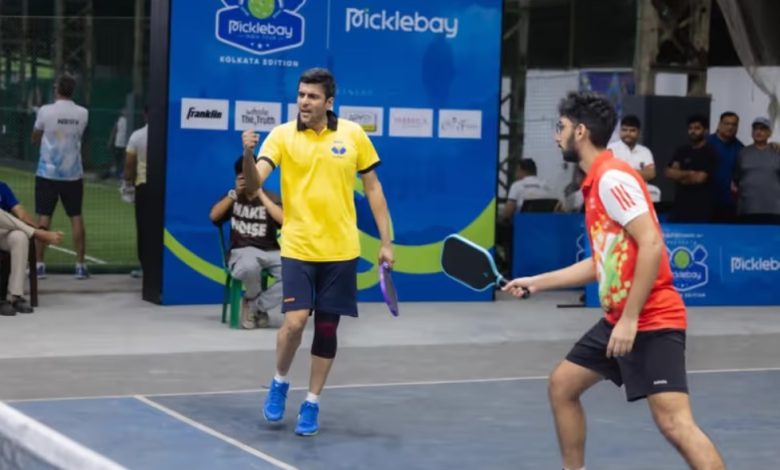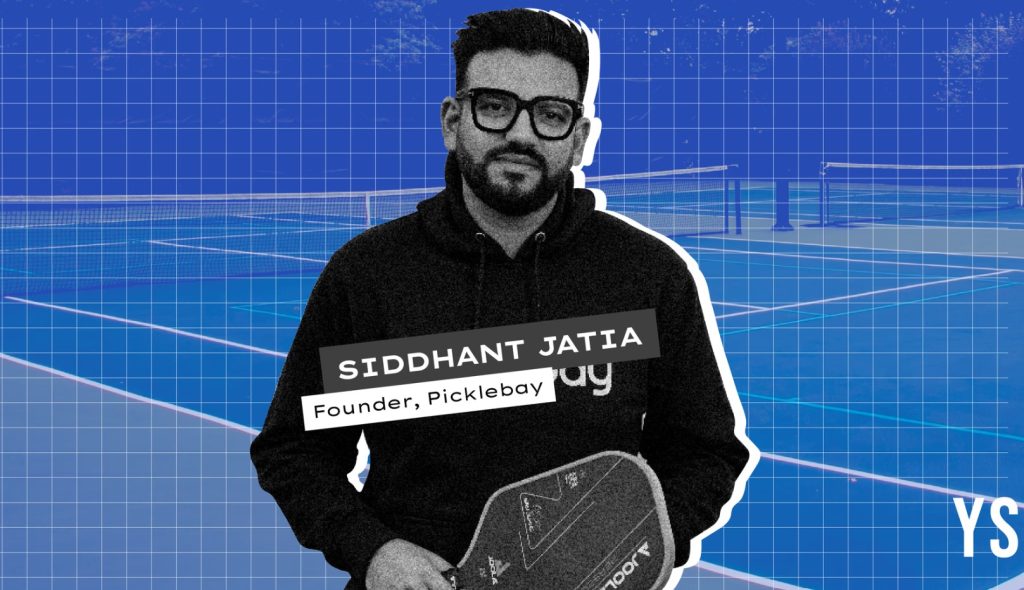India’s Picklebay Integrates Tech into Pickleball—and It’s Working

In May of this year, tech entrepreneur and visionary Siddhant Jatia launched Picklebay, India’s first ever technology-integrated platform that helps Indian pickleball players address common challenges growing sports usually face.
Among these challenges are finding courts, disjointed and unorganised tournaments, lack of communication among players, and missing or inaccurate court data. These challenges, while pressing, have not necessarily stopped pickleball’s meteoric rise in India, but when left unaddressed, they could put a cap on the ongoing pickleball revolution in Asia’s second largest country.
Enter Picklebay, the brainchild of someone who actually plays pickleball regularly.
“It was a sport with tremendous energy but no structure,” Jatia told YourStory. “Every time I played, I could sense how much people loved the game, but I also saw the frustration. I was playing four to five times a week, but there was no easy way to find regulation-sized courts or players of my skill level. Tournaments would drag on for hours because of poor scheduling.”
Picklebay: Putting Order into Pickleball
The first order of business for Jatia and his team: Create a reliable database of pickleball facilities. So, they travelled across India’s six major cities—Delhi, Hyderabad, Chennai, Kolkata, Mumbai, and Bengaluru—to physically check out pickleball courts and facilities. Slowly but surely, Jatia and his team began collating a list of these venues, with live images, verified measurements, and other pertinent details to boot.
“We wanted to eliminate the guesswork that players face and build trust through data accuracy,” Jatia explained about Picklebay’s approach. “For instance, if a court measures slightly less than the regulation size of 60 by 30 feet, say 54.6 feet, we ensure that players are informed about it.”
Today, Picklebay’s database already lists around 225 facilities with 600–650 courts—definitely not bad for a startup that launched only two months ago.

Turning Vision to Reality: The Picklebay Story Is Looking Like a Smashing Success
It’s early, but initial returns point to Picklebay becoming a certified success story nearly a year after it was first conceptualised in October 2024 as an online listing of courts. In just two short months since its official launch, the platform already has more than 1,100 registered users, most from big cities like Mumbai, Bengaluru, and Kolkata. Delhi-NCR, Hyderabad, and Ahmedabad are up next, and after them, there’s no telling where Picklebay will be headed.
“We started with around 250 users in our first month, grew to over 750 in the second, and we’re now adding users at 70–80% month-on-month,” Jatia said. “By the end of 2025, our goal is to reach 20,000 users.”
That goal seems reasonable enough given pickleball’s explosive growth in India, where about a million players are projected by 2028. Along with it, of course, is a steady increase in pickleball courts in the country, with some three to four new ones opening weekly in different cities. To date, according to CapTable, India has about 1,200 pickleball courts—the equivalent of a 500% increase in less than a year from the 200 pickleball courts or so in India in early 2024. At this pace, the number of courts will reach 2,500 in no time, and interest in pickleball will be even greater that it already is.
But, again, there are challenges that could torpedo this explosive rise, and Picklebay is looking to nip them at the roots this early so pickleball can fully take off—if it hasn’t already.
“We know the challenges, limited sponsorships, lack of media coverage, but we’re building the foundation now. This sport is inclusive, exciting, and on the verge of a boom. Picklebay will be there to lead that growth,” Jatia pointed out.
To that end, Jatia describes Picklebay’s role perfectly: a trusted partner of pickleball.
“Recognising the importance of quality infrastructure in shaping the sport’s future, we’ve taken on the role of a trusted partner for facility development. Through strategic consulting and hands-on execution, we ensure that every court we help build supports both community-level engagement and professional play,” explained Jatia, who also has his sights set on providing high-level pickleball players in India better, more organised tournaments.
World-Class Tournaments and the Road
Aside from court listings, Picklebay also features a tech-enabled tournament system that helps with signups, match scheduling, live scoring, and results. These enable better organised tournaments that could rival those conducted in the US.
“Tournaments used to be frustrating for both organisers and players. We wanted to remove that frustration. Our system ensures that events run like clockwork. Players know exactly when they’re playing, and everything is transparent,”
– Siddhant Jatia on Picklebay helping out in organising tournaments
The system evidently works, with Picklebay drawing over 400 players in Mumbai and 500 in Kolkata during its 10-city India Tournament Series 2025. The competition series was so successful that the event in Mumbai, according to Jatia, finished 10 minutes ahead of schedule, something he says rarely occurs.
Of course, Picklebay needs to earn money, and the platform, Jatia pointed out, is already in the early stages of monetisation—another strong potential growth indicator, if anything. Granted, it’s still way too early, but Jatia is confident in Picklebay’s money-earning potential, noting how its model “is designed to scale across multiple touchpoints” and how the platform’s “retreats, events, and corporate leagues are already attracting interest from brands.”
Monetary goals aside, Picklebay’s vision remains the same: to build India’s growing pickleball community. And it is doing so one connection at a time, one court listed after another, and tournament after tournament.





